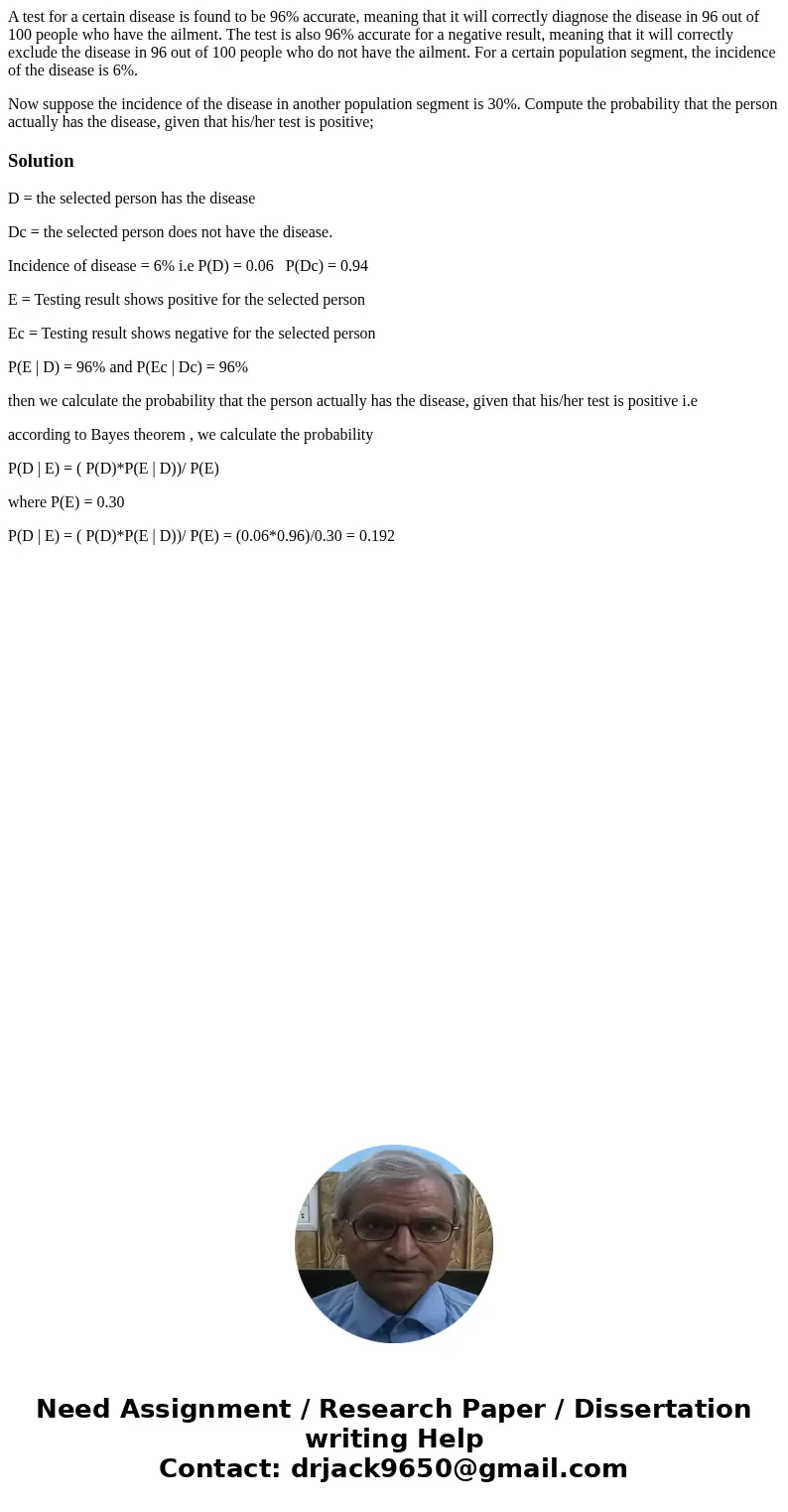A test for a certain disease is found to be 96 accurate mean
A test for a certain disease is found to be 96% accurate, meaning that it will correctly diagnose the disease in 96 out of 100 people who have the ailment. The test is also 96% accurate for a negative result, meaning that it will correctly exclude the disease in 96 out of 100 people who do not have the ailment. For a certain population segment, the incidence of the disease is 6%.
Now suppose the incidence of the disease in another population segment is 30%. Compute the probability that the person actually has the disease, given that his/her test is positive;
Solution
D = the selected person has the disease
Dc = the selected person does not have the disease.
Incidence of disease = 6% i.e P(D) = 0.06 P(Dc) = 0.94
E = Testing result shows positive for the selected person
Ec = Testing result shows negative for the selected person
P(E | D) = 96% and P(Ec | Dc) = 96%
then we calculate the probability that the person actually has the disease, given that his/her test is positive i.e
according to Bayes theorem , we calculate the probability
P(D | E) = ( P(D)*P(E | D))/ P(E)
where P(E) = 0.30
P(D | E) = ( P(D)*P(E | D))/ P(E) = (0.06*0.96)/0.30 = 0.192

 Homework Sourse
Homework Sourse